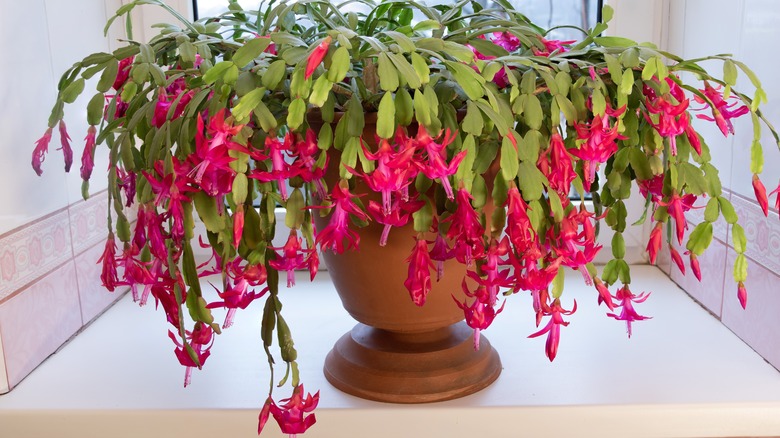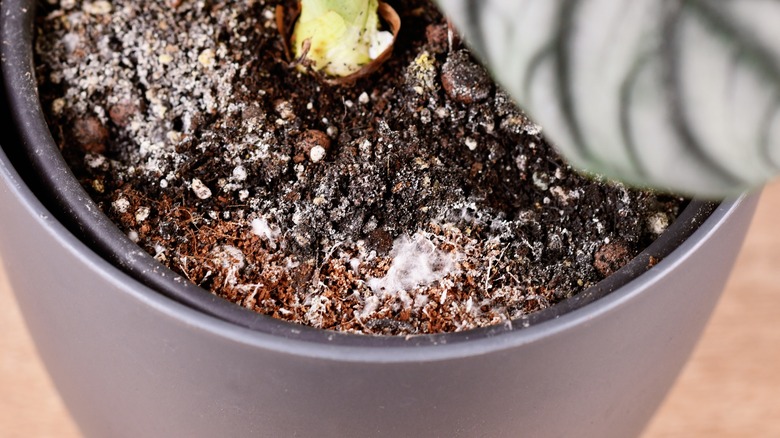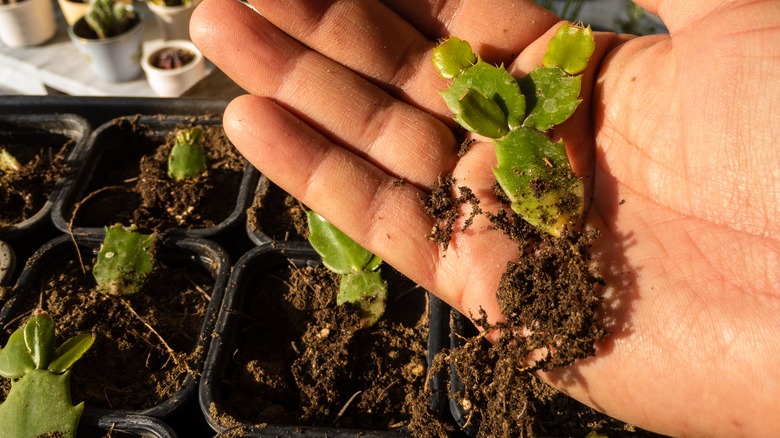How To Save Your Beautiful Christmas Cactus From Root Rot
While it seems to be an unsaid rule that all Christmas decorations must come down during the first week of January, your holiday plants may very well be the exception. Holiday houseplants can continue to bring vibrancy and life to your home during an otherwise gloomy and cold season. And there's a particular houseplant that seems to be a year-round favorite.
With its playful bright pink blooms and dangling succulent stem segments, the Christmas cactus works great as a table centerpiece and can make quite a statement on a coffee table in a room where people tend to gather. Perhaps its popularity is why there are several holiday cactus varieties all named after the time of year they bloom, such as Thanksgiving cactus and Easter cactus.
To keep your Christmas Cactus around, it's important to know how to care for the houseplant – it can easily live for up to 30 years, and in some cases survive to be 100! The holiday houseplant is relatively low maintenance, prefers a sunny spot, and needs a period of darkness to bloom. But there's one stubborn problem that may arise at one point or another, and if left untreated can kill your beloved succulent plant.
Root rot is a plant disease caused by overwatering, poor drainage, or soil fungi. Usually, unhealthy roots look dark and mushy, and the disease will cause the branches of your Christmas cactus to droop and become soft. But it is not a complete loss if this happens.
Empty standing water in your Christmas cactus pot and let the soil dry out
To help your Christmas Cactus recover, the first step is to remove any excess water from your pot and bottom drainage tray. If you notice small pools of water on the soil's surface, gently pour it out in the sink. If you leave your cactus in soggy soil, the roots will begin to deteriorate, making it more susceptible to fungus and other soil-borne diseases. Be sure to let the soil thoroughly dry out before watering your plant again.
If your holiday houseplant still appears to be suffering, check your pot's drainage. When soaking your plant, water should easily come out of the holes of your pot — if the container has inadequate drainage, the soil will stay wet for much longer. In this case, it is best to follow tips for easily repotting your favorite plant and remove damaged roots prior to doing so.
Remove damaged roots and determine if your Christmas cactus needs a new pot
Healthy roots tend to be white and flexible, while damaged roots have blackened tips that are soft and mushy, which is the beginning of root rot. Carefully cutting parts of your houseplant's roots that have been damaged will help prevent the disease from spreading further.
To do so, gently lift your plant out of its pot, and shake the soil out of the root system until you see the condition of the roots. Remove all portions of damaged root tissue with a sharp tool such as sterilized garden sheers: it is important to use clean gardening tools for pruning because clean cuts tend to heal faster.
Before repotting, examine if your Christmas cactus has started to outgrow its current pot size. If so, choose a new well-draining pot that's one to two inches bigger, and add new potting soil that's slightly acidic with a pH of 5 to 7. This will give your Christmas cactus the environment it needs to thrive and recover from root rot, so that your favorite houseplant is around for many holiday celebrations to come.


